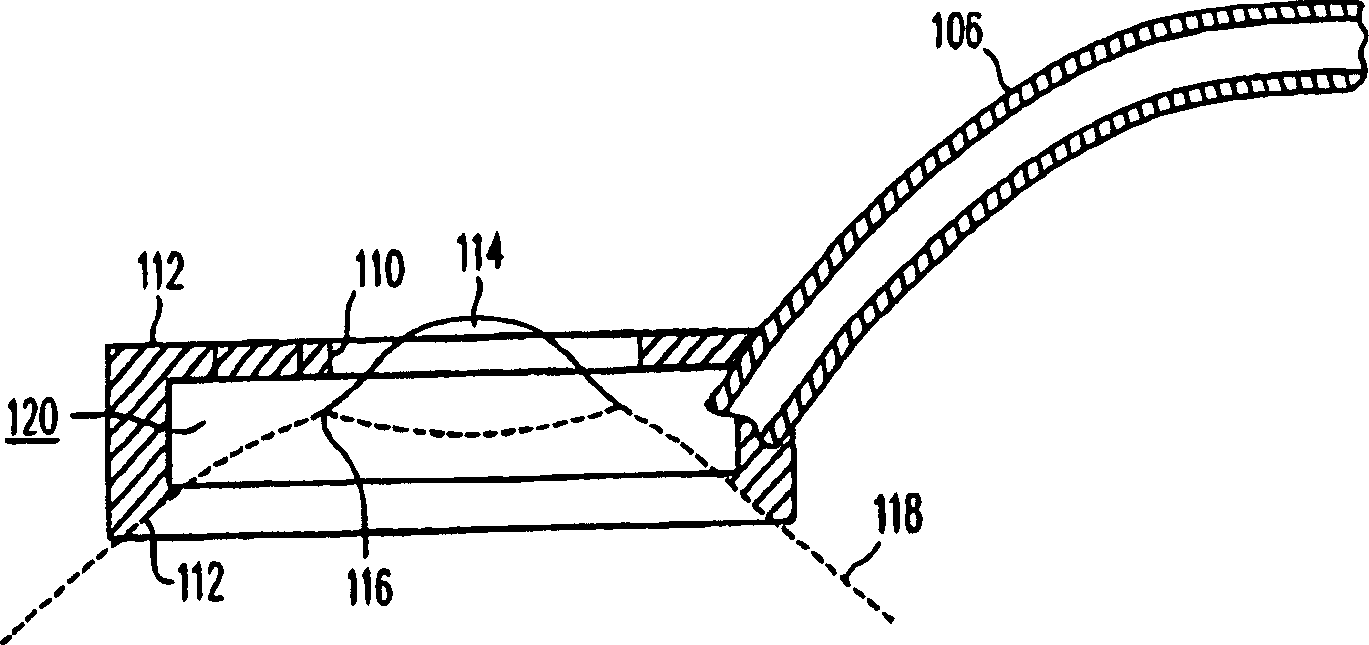Corneal retention or stabilizing tool
A corneal, stable technology, applied in ophthalmic surgery, small surgical forceps, etc., can solve the problems of reduced clarity, weakened ability, and months of use
- Summary
- Abstract
- Description
- Claims
- Application Information
AI Technical Summary
Problems solved by technology
Method used
Image
Examples
Embodiment Construction
[0037] FIG. 1A shows a perspective view of a stabilizing device modification 100 comprising a base 102 and a vacuum forming member 104 . The base itself includes tubes (or tubing) 104 that communicate to a vacuum source. The vacuum tube 104 can be used as a handle and it is typically provided with a vacuum break hole 106 so that the user can manipulate or interrupt the vacuum to the stabilization device when removal is desired. Base portion 102 has an opening 108 through which the cornea of the human eye protrudes after the stabilization device is fully positioned on the eye. As can be seen more clearly in subsequent figures, base 102 has an inner radial surface (or inner diameter surface) 110 and an outer radial surface 112, wherein the inner radial surface is configured to The outer diameter surface is also in contact with the eye and provides a seal for vacuum. The stabilization device may be an automatic device, for example, the vacuum may be automatically controlled. ...
PUM
 Login to View More
Login to View More Abstract
Description
Claims
Application Information
 Login to View More
Login to View More - R&D
- Intellectual Property
- Life Sciences
- Materials
- Tech Scout
- Unparalleled Data Quality
- Higher Quality Content
- 60% Fewer Hallucinations
Browse by: Latest US Patents, China's latest patents, Technical Efficacy Thesaurus, Application Domain, Technology Topic, Popular Technical Reports.
© 2025 PatSnap. All rights reserved.Legal|Privacy policy|Modern Slavery Act Transparency Statement|Sitemap|About US| Contact US: help@patsnap.com



